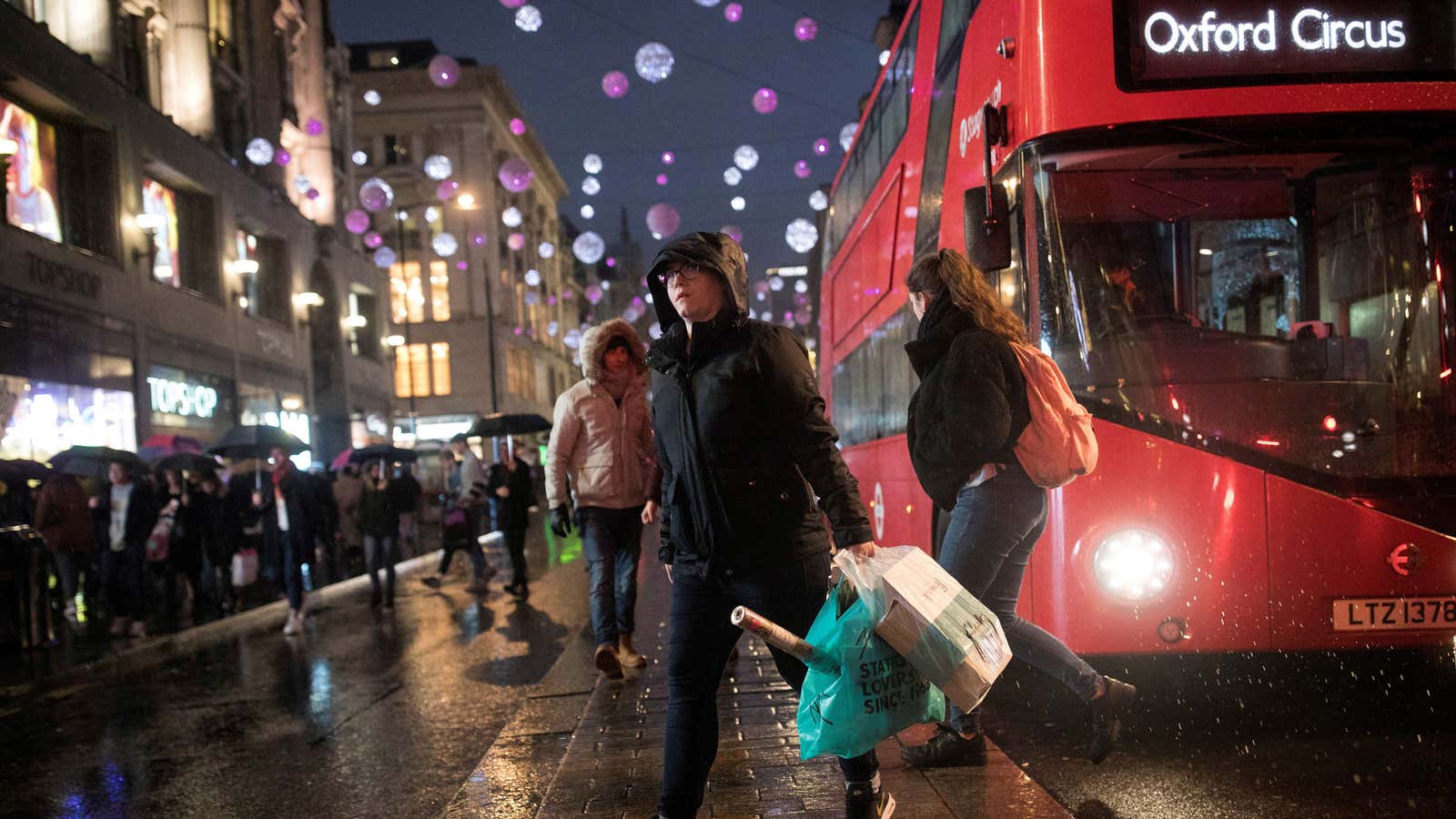This year has been brutal on British retailers. But the hope, at least, was that the holiday shopping season would turn things around and give them some cause for cheer.
It hasn’t.
“The current trading conditions are unprecedented in our experience and are significantly worse even than during the recession of 2008-09,” Helen Connolly, CEO of Bonmarché, said last week as the company cut its profit forecast.
“November was the worst on record, unbelievably bad,” said Mike Ashley, the top executive at Sports Direct, on the same day.
Today (Dec. 17) was the turn of Nick Beighton, CEO of UK-based online retailer Asos. “November, which you know, is one of our most important months for us in terms of sales and profitability, was significantly behind our expectations,” he said on a call with industry analysts. In its earnings update (pdf), Asos slashed its profit forecast for the year through August 2019 to 15%, from the previous 20% to 25% growth it expected.
Though the company’s sales still grew overall, the news sent investors into a panic. Asos’ shares plunged more than 40%, as other British chains fell too.
Asos, thanks to its incredibly fast online model, has been one of the UK’s rising stars in fashion retail.
“This goes against the script,” Stephen Lienert, a credit analyst at Jefferies, told Bloomberg. “It was supposed to be bricks and mortar that’s dying and online is the future, but that headline gets ripped up today.”
It’s an indication that the dismal situation of British retail goes beyond the high street, where most of the suffering has been concentrated. The first half of 2018 saw the largest net decline in stores on the British high street in five years, according to research by PwC and the Local Data Company.
Consumer spending is down significantly, labor costs are up, and there remains the looming uncertainty of what’s going to happen after Brexit, planned for March, when the UK officially leaves the EU. The conditions have created a tough environment for all sorts of businesses, from fashion retailers to restaurants, which are also closing at a rapid clip.
Brands are having to rely heavily on promotions, eating into their profit margins. “In fashion we have seen an unprecedented level of discounting,” Beighton said. “Certainly something I’ve not seen before, and that’s been across the board.”
Asos has given in to the discounting itself, however Beighton wondered if the brand had offered enough Black Friday deals compared to competitors, for instance, to get shoppers interested.
One of the big trends Asos has seen is shoppers opting for lower-priced items. The average selling price of a customer’s total purchase was down 6%. In menswear specifically, the company also saw “a slowdown in sneaker brands, which has been quite dramatic,” Beighton said.
Asos’s UK sales on their own weren’t terrible. They grew 19% in the three months to November—down slightly so far from the growth in the last four months of 2017 (pdf). The brand, however, said its sales had fallen in Europe too, specifically France and Germany, and in regions such as Australia. “The current backdrop of economic uncertainty across many of our major markets together with a weakening in consumer confidence has led to the weakest growth in online clothing sales in recent years,” the brand said. “We have recalibrated our expectations for the current year accordingly.”
